Discover 20 hidden attractions, cool sights, and unusual things to do in Sosnowiec (Poland). Don't miss out on these must-see attractions: Schön Palace, Mieroszewski Manor House, and Dietel Palace. Also, be sure to include Oskar Schöen's Palace in your itinerary.
Below, you can find the list of the most amazing places you should visit in Sosnowiec (Silesian).
Table of Contents
Schön Palace
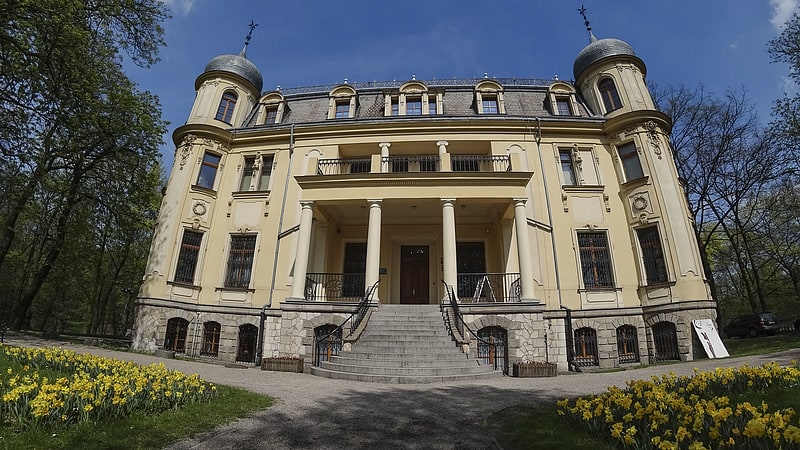
Also known as: Pałac Schöna w Sosnowcu Środuli
Palace in Sosnowiec, Poland. Schön Palace is a palace located in Sosnowiec in southern Poland. The building is located near the Warsaw–Vienna railway and surrounded by a neo-Romantic park. Since 1985 it has housed the Museum in Sosnowiec. Wilhelm Palace is located nearby.
It is one of the two palaces of the Schön family in Sosnowiec; the other being the New Schön Palace.[1]
Address: Chemiczna 12, Sosnowiec
Mieroszewski Manor House

Building in Sosnowiec. The Mieroszewski Manor House in Sosnowiec-Zagórze was erected in 1777 by count Józef Mieroszewski in place of a wooden larch court on the top of the Zagórze Hill. It is one of the two palaces that were located here. Preserved in the form of the remnant park formerly surrounded the court from all sides. The park is currently occupied by Hospital No. 3.
Initially it was a single-storey brick mansion covered with a beveled roof with an axle and a balcony. The construction of the structure of the building, especially the scaffolding of the roof, used beams from the dismantled wooden manor house.
During the reconstruction in 1876, the building was elevated to about one floor and the front elevation was finished with two peaks. At the beginning of the 1970s, before the site of the Conservation of Monuments was placed here, an outbuilding from the eastern side was removed, whereby the body of the palace was symmetric. Currently, this classicist building is five-axial, with a three-axial central projection. On the north (front) side, on the axis, there is a porch with a massive balcony supported by columns. The whole is covered by hip roof, passing from the north to the two peaks. Since the 1970s there is a workshop for the preservation of works of art in the manor house.[2]
Dietel Palace

Also known as: Pałac Dietla
Cultural center in Sosnowiec, Poland. Dietel Palace is a neo-baroque palace built for Heinrich Dietel, located in Sosnowiec.[3]
Address: Stefana Żeromskiego 2, 41-300 Sosnowiec
Oskar Schöen's Palace
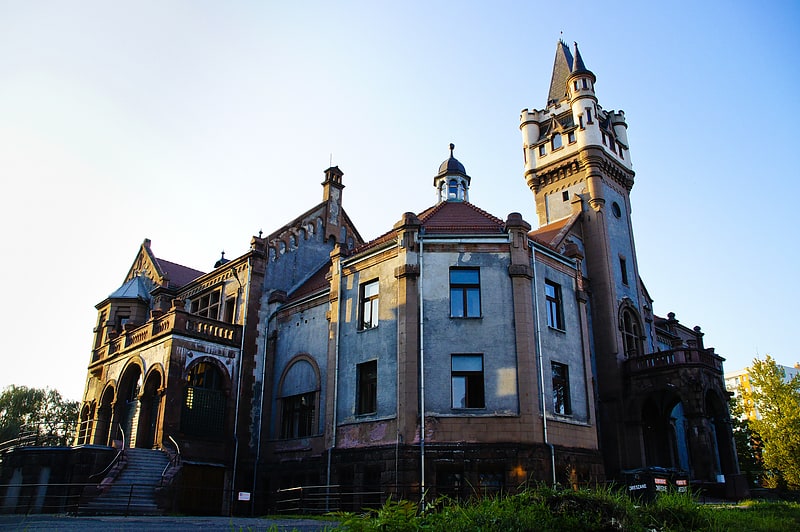
Also known as: Pałac Oskara Schöna w Sosnowcu
Palace in Sosnowiec, Poland. Oskar Schöen's Palace called also New Schöen's Palace – one of the two residences of the Schöen family, located on the merger of the districts and, at the time of its creation, the settlement: Ostra-Gorka and Sielec, on the left bank of the Black River. Actually The Palace is located in the center of Sosnowiec[4]
Address: 19 1 Maja, Sosnowiec
Sielecki Castle
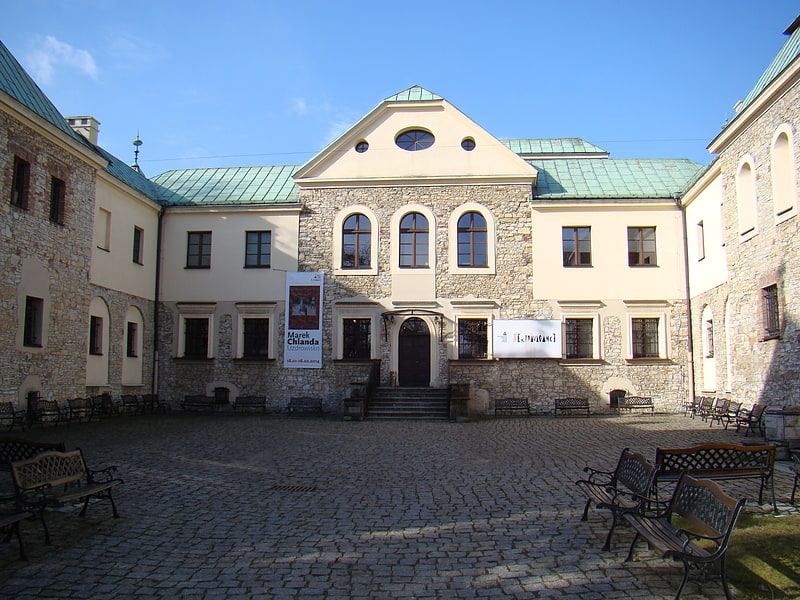
Also known as: Zamek Sielecki
Castle in Sosnowiec, Poland. Sielecki Castle is a castle in the city of Sosnowiec in southern Poland, located in the Sielc district. The castle is located on the left bank of the Czarna Przemsza River. It was built in the 17th century and it is the oldest building in the city.[5]
Address: Zamkowa 2, Sosnowiec
St. John Evangelical Church
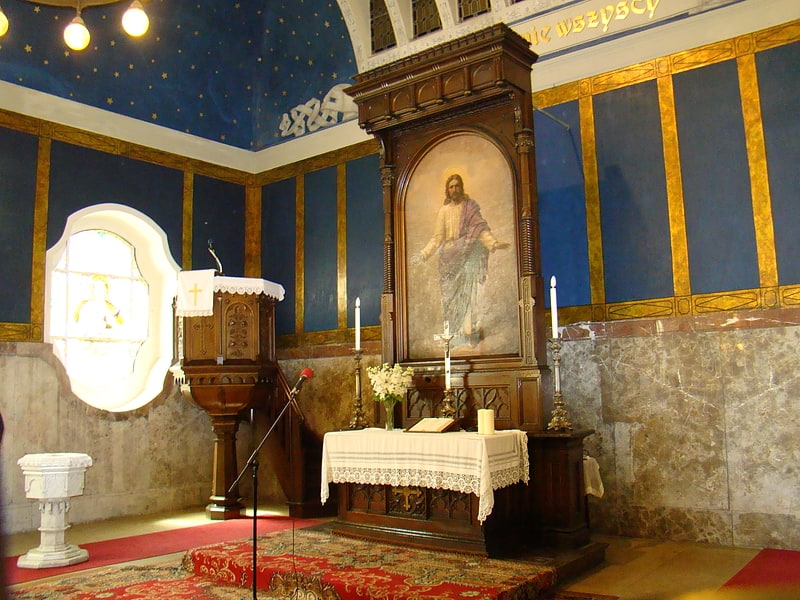
Also known as: Kościół ewangelicki w Sosnowcu-Pogoni
Evangelical church St. John in Sosnowiec, Poland – parish church of the Evangelical-Augsburg parish in Sosnowiec, located at ul. Stefan Żeromski 1.[6]
Address: Stefana Żeromskiego 4, Sosnowiec
Sosnowiec Cathedral
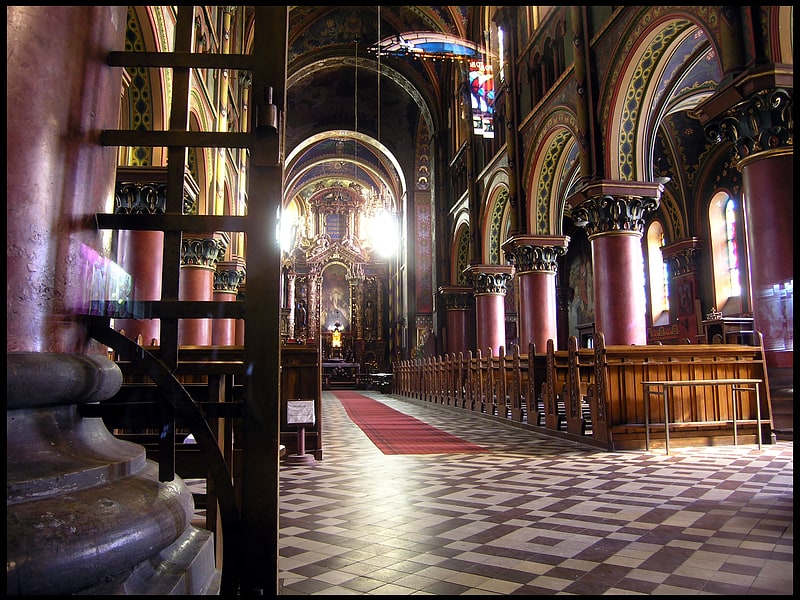
Also known as: Bazylika katedralna Wniebowzięcia Najświętszej Maryi Panny w Sosnowcu
Cathedral in Sosnowiec, Poland. The Cathedral Basilica of the Assumption of the Blessed Virgin Mary also called Sosnowiec Cathedral is a religious building affiliated with the Catholic Church which is located in the city of Sosnowiec in the European country of Poland.
It is eclectic church built in 1899, on the plan of a Latin cross basilica type. As of 25 March 1992 is the cathedral of the Diocese of Sosnowiec.
The most important Catholic shrine of Sosnowiec was built between 1893 and 1899. In 1896 there was put into operation for the faithful the lower chapel. In 1899 the Bishop of Kielce Tomasz Kulinski erected a new parish, freeing it from the area of the parish of Czeladź. In the year 1901 there was put into operation the rectory.
In October 2014 it was affected by a fire.[7]
Address: Kościelna 1, 41-221 Sosnowiec
Środula

Środula is a former village in Poland, now the northern district of the town of Sosnowiec, Poland.
Edward Gierek, a former leader of Poland (the 4th First Secretary of the Polish United Workers' Party) during the communist era, is buried there.[8]
Orthodox Church of the Holy Virgin

Also known as: Cerkiew Świętych Wiery, Nadziei, Luby i matki ich Zofii w Sosnowcu
The Orthodox Church of Sts. Vera, Hope, Loy and the mother of their Zofia in Sosnowiec – the only one existing of the three Orthodox Orthodox churches in Sosnowiec. It is located at Jan Kilinski Street 39. It is a parish church. It is part of the Deaconate of the Diocese of Lodz-Poznan Polish Autocephalous Orthodox Church.[9]
Address: Jana Kilińskiego 39, 41-200 Sosnowiec
Mauzoleum Dietlów
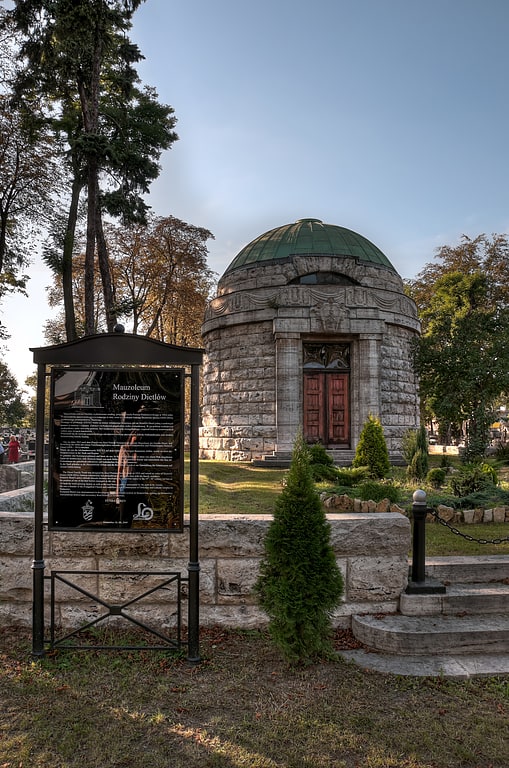
Dietl family mausoleum - mausoleum in the Evangelical cemetery in Sosnowiec at Smutna Street, built in 1912, designed by Józef Pomian-Pomianowski. It is one of the greatest works of cemetery architecture in the world and a living proof of the multifaith and multicultural character of the town of Sosnowiec.
Heinrich Dietel (1839-1911) was the creator of the first worsted wool spinning mill in the Congress Kingdom, and of the buildings running along today's Żeromskiego Street.
After the death of Heinrich Dietl, an impressive mausoleum was built for him (and his family). It is a free-standing brick building, located centrally in the middle of the cemetery. It was built on a circular plan from massive stone blocks with sculptural detail. It was erected from volcanic tuff. The interior of the rotunda is divided into two levels. The upper part is currently used as a cemetery chapel. The mausoleum is surrounded by a low wall, rectangular in plan. The author of the project, modeled on ancient Roman tombs, is the architect Józef Pomian-Pomianowski.
In the crypt of the chapel, in the central place, rested the mortal remains of Heinrich Dietl and his wife Clara, née Jacob. Twenty-two burial niches were also located here, intended for Dietel's descendants. In two of them Klara Dietel's brother Richard Jacob and his wife Helena nee Schroter were buried.
Towards the end of the World War II a Soviet soldier entering the underground part of the mausoleum overturned the bust of Heinrich Dietl standing there, depriving him of his nose. The building, as well as the whole area of the Evangelical cemetery in Sosnowiec, was devastated and stolen with impunity. At the beginning of the 21st century candlesticks were stolen from the mausoleum, brass details from the door were stolen and copper flashings and roof covering were ripped off.
The first concrete restoration project was the parish's 2008 entry of the object into the register of immovable monuments of the Silesian province. Already one year later (2009), the roof covering was repaired, which prevented the mausoleum from leaking into the interior. At the same time the parish developed plans to renovate the object, and in the second half of 2009 the renovation of the mausoleum's facade began. The work was completed in November. The mausoleum is opened annually on November 1 and 2.
Address: Generała Stefana Grota-Roweckiego 47, 41-300 Sosnowiec
Dworzec PKP Sosnowiec Główny
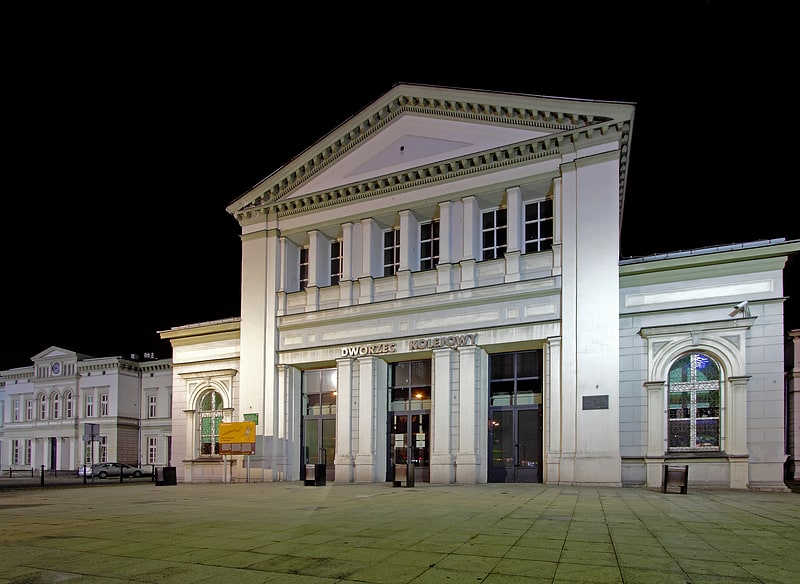
Sosnowiec Główny - railroad station in Sosnowiec - one of the most important in Silesia, located in the city center, at 3 Maja Street. According to PKP classification the station has the highest category Premium. It was established on 24 August 1859 as part of connecting the Warsaw-Vienna Railway and the Upper Silesian Railway as a border station, which in time gave rise to the town of Sosnowiec. The station is also a railroad junction from which lines go in the direction of Katowice, Warsaw Central and Tunnel. Trains of all categories depart from it, including your Railway Lines and Express InterCity, as well as international trains.
In 2018, the station served approximately 3,300 passengers per day.
The station belongs to the PKP Polish Railway Lines Department in Sosnowiec.
Address: 16 3 Maja, Sosnowiec
Dawna Szkoła Realna
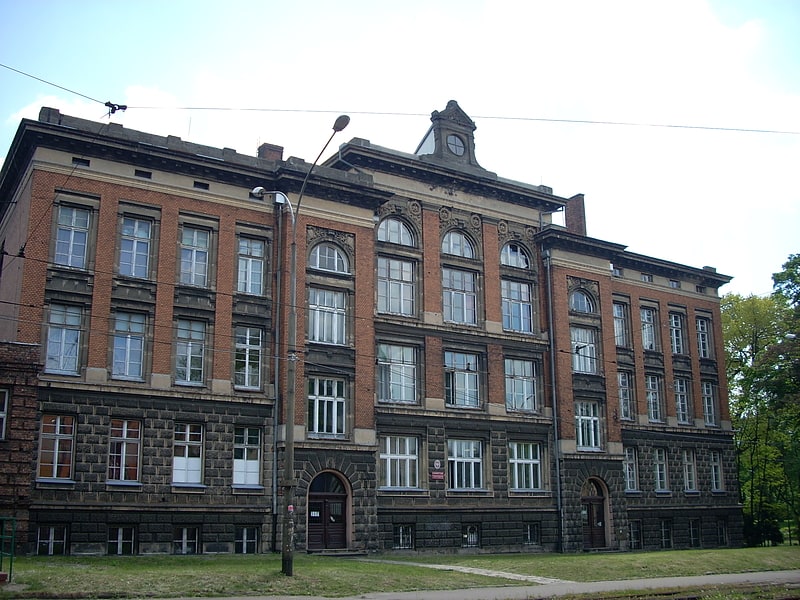
Address: 5 Stefana Żeromskiego, Sosnowiec
Ski Slope Środula
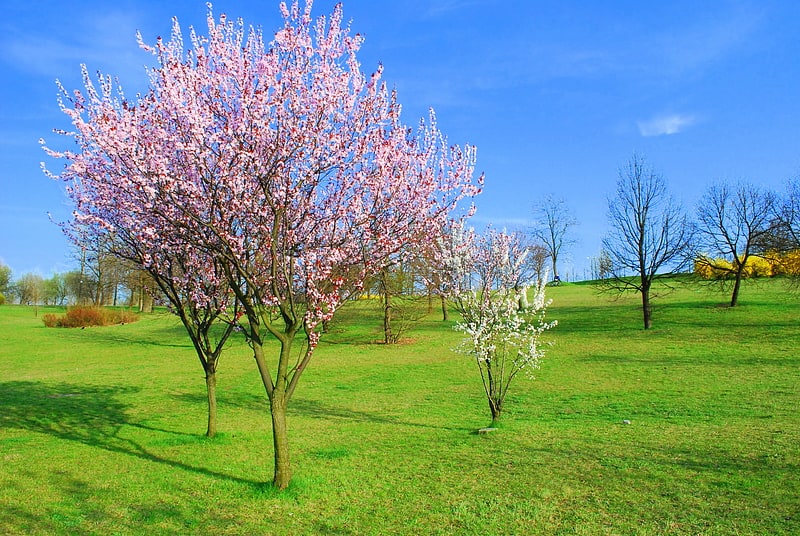
Park Środula - a municipal park in Sosnowiec, located at the end of 3 Maja Street, between the Środula housing estate, Norwida Street, the Zagórze district, Blachnickiego Street, and Gen. Zaruskiego Street, with an area of 10.038 ha in developed areas, and together with the adjacent trees without regular alleys - about 45 ha. The whole area is situated on the slope of a hill, with an artificial slope 319.5 m above sea level, whose vast summit is an excellent vantage point for viewing the panorama of the area. At the foot of the hills a line of old trees marks the course of the former road leading to Krakow, then the Małe Zagórze street. In the north-eastern part there is a small water reservoir. The park area is overgrown with strings of low, pruned bushes and trees. The vegetation is entirely of the planting type, planted in batches after 1991.
The park in the winter season is very popular among people actively engaged in winter sports such as skiing and snowboarding. In summer it is frequented by fans of mountain biking, Nordic walking, moutainboarding and running.
Address: 3-go Maja 51, Sosnowiec
Pałac Wilchelma
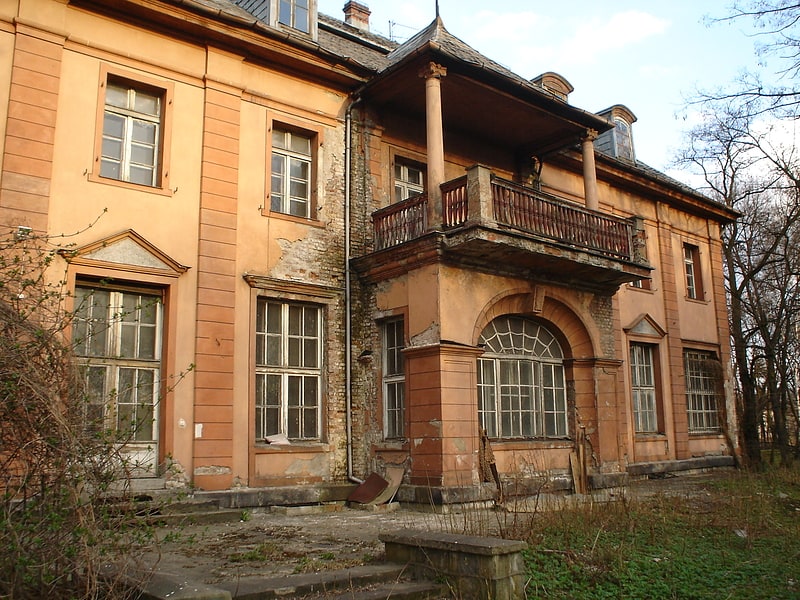
Wilhelm Palace - one of the two palaces that are part of the palace complex in Sosnowiec - Środula, next to Schön Palace.
Address: 12/14 Chemiczna, Sosnowiec
Teatr Zagłębia
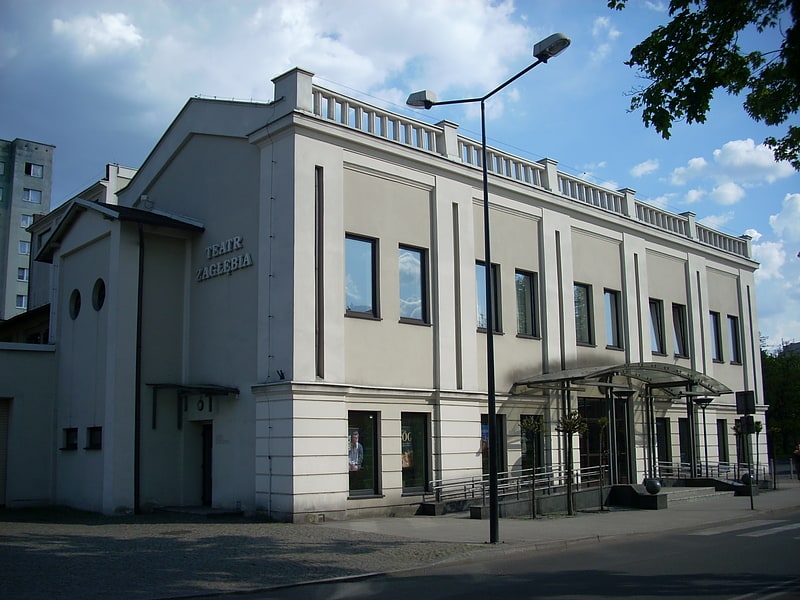
Zagłębie Theatre in Sosnowiec on Teatralna Street. It was established - in the sense of a professional theater - in 1897, with its seat in a building erected from the private funds of an entrepreneur, Count Mortimer Renard, as the 6th theater in the Kingdom of Poland, or, as it is sometimes stated, "on Polish soil". The basis for its appearance - surprising, it would seem, in a very working-class environment - was the lively activity of amateur theaters in the city already in the 1870s. They were especially active among workers, particularly prominent in the textile industry, among whose employees the theater was active probably from 1872. Another significant community in this regard was the railroad workers, among whom even two such amateur railroad theaters began operating in the early 1880s. They operated in what is now Śródmieście and in the district known today as Maczki, which was then called "Granica" (due to the location of the railroad station on the border between the Russian and Austrian annexations, which merged into the so-called Triangle of Three Emperors delineated by the borders of Sosnowiec.
The building, which now serves as the theater's headquarters in its own right, was constructed according to the plans of architect Karol Steczkowski and was then part of a planned complex that included the so-called Winter Theatre (the unofficial name of the time; the building has survived to this day and serves as the theater's headquarters), the Guest Rooms - Saski Hotel, and the Wooden Summer Theatre.
The "first element" - the Winter Theatre - was inaugurated on 6 February 1897 with a performance of Aleksander Fredro's Zemsta / The Revenge by a local amateur group, including the recitation of the occasional piece Prologue by Andrzej Niemojewski. The entire complex was completed in July of the same year, the main moment being the commissioning of the nearby wooden Summer Theatre (summer of 1897). The stage was inaugurated on July 15 of that year with Bogusławski and Stefani's opera "Cud mniemany, czyli Krakowiacy i Górale" ("The Miracle, or Krakowiacs and Highlanders"). The Summer Theatre served as a second stage until World War I (during the war, in the extreme economic situation of the time, it was demolished and/or, according to other sources, burned down in the 1920s).
Unfortunately, the naming of this theater was not stable. This was connected with local customary names, dating back to the times of amateur theaters, with different owners of individual elements of the original complex, and finally with times of economic crisis and the resulting transfer of ownership and usufruct rights to different entities. Perhaps this fluidity of nomenclature is the reason why some respectable sources, such as the PWN Encyclopaedia, do not recognise this one of Poland's older theaters, and even seem to link the creation of the Zagłębie Theatre with its emergence in 1955 from an earlier phase, which was the incorporation after World War II of the Sosnowiec theater as a branch of the clearly younger Katowice theater. However, this was connected with constant protests from the Sosnowiec community and finally, as part of the thaw of the 1950s, the two theaters managed to restore their independence (for the second time in history, since shortly before World War II, the two theaters also functioned together, but then, for economic reasons and once the crisis was overcome, this temporary merger was reversed). Thus, from the beginning until 1924 the 'Permanent' (Zimowy) Theatre was owned by the 'Towarzystwo Hrabia Renard' (Count Renard Society) and was officially associated with this name, although the name 'Zimowy Theatre' was mentioned in popular circulation. In 1924 it was bought by the city and began to function as the Municipal Theatre (some sources connect this name with 1927), which may have been more connected with the emphasis on this theater as opposed to the amateur theater, which in 1928 was also given the use of the 'Winter Theatre' building by the city. From the moment the theater was bought out by the City in 1924, it was also known unofficially as the Zagłębie Theatre. (as a branch of the Silesian Theatre in the years 1947-1955). After all, it should be remembered that throughout the history of the whole Sosnowiec theater complex the following names still existed - in some cases meaning the Winter Theatre for a few years and the Summer Theatre for a few years: Ogródkowy Theatre (Summer Theatre), Popular Theatre (in 1911 the Summer Theatre was so called and in the early 1920s the Municipal Theatre) and Cheap Theatre (as above). After 1955, when the theater had established itself organisationally and in terms of its name as the heir to all of Sosnowiec's theatrical traditions, the name Zagłębie Theatre was no longer subject to any temptations or changes.
The building of the Winter Theater - the current theater - has been rebuilt many times. It gained its present form during a modernization carried out in 1976-1978 and after an extension carried out in 1992. No elements of the original interior decoration and furnishing have survived.
Some personalities of Polish theater and literature with the Zagłębie Theatre or as guest artists: Wanda Siemaszkowa, Bronisław Dąbrowski, Józef Kotarbiński, Tadeusz Fijewski (it was in Sosnowiec in season 37/38 that he was discovered as an incomparable comedic talent), Jan Świderski (actor), Leon Kruczkowski, Gabriela Zapolska "supervising" the staging of her plays, Jan Pierzchała, Lech Piwowar, Lidia Bienias.
Address: Teatralna 4, 41-200 Sosnowiec
Park Schöna

Schön Park - a historic English-style park in Sosnowiec established in 1885, designed in neo-Romantic style around the complex of palaces: Schön and Wilhelm, standing at 12 - 16 Chemiczna Street.
Kościół Św. Tomasza
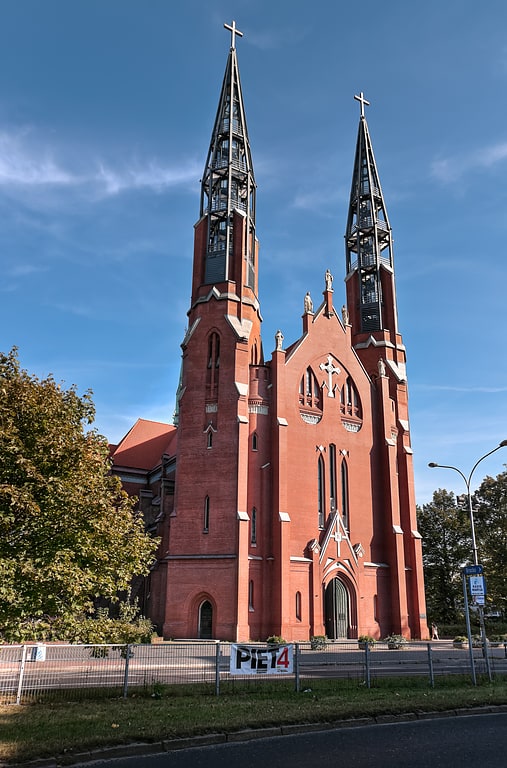
St. Thomas the Apostle Church in Sosnowiec is a Roman Catholic parish church in Sosnowiec. It belongs to St. Thomas the Apostle deanery. It is located in Orla Street, in Pogoń district.
The temple was built between 1904-1911 in Neo-Gothic style according to the project of architect Jozef Pomian - Pomianowski. It is a brick building, built on the plan of a Latin cross with an expanded chancel. It is a building with three naves of basilica type. The body of the church is diversified, at the facade there are two modern openwork towers, because in 2004-2007 they were added according to the project of Ewa and Tomasz Taczewski.
The interior decoration of the church was created in stages, but neo-Gothic elements dominate. The interior is enriched by a wooden, carved altar with features of Art déco style, located at the intersection of the nave and the transept.
Orthodox Cemetery
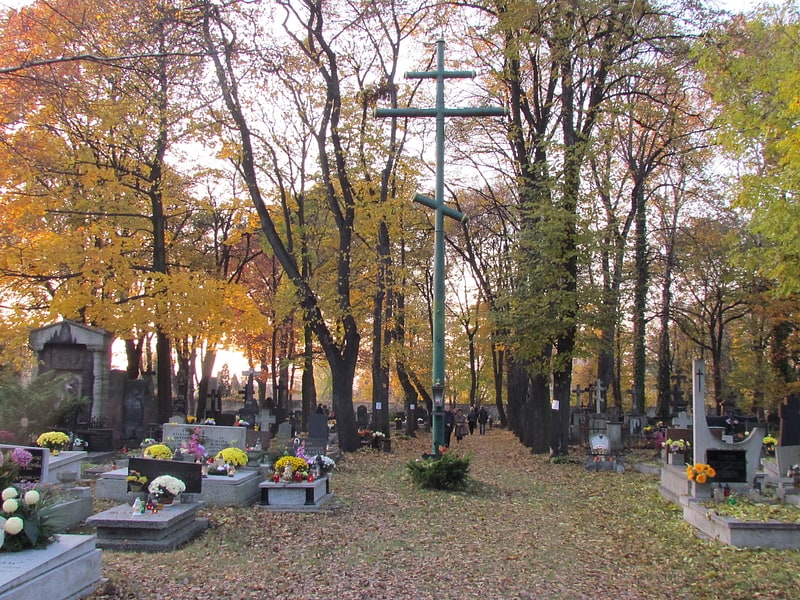
Orthodox Cemetery in Sosnowiec - a cemetery that is part of the Multifaith Cemetery in Sosnowiec.
It was established in 1894 and covers an area of 0.9 ha. It is connected with building of the Orthodox Church of Saints Vera, Nadyzda and Lyub'wi in Sosnowiec and establishing of the Orthodox parish. The fence of the cemetery is characteristic - it is built as a stone wall with an oak openwork gate.
Nowy Park Sielecki
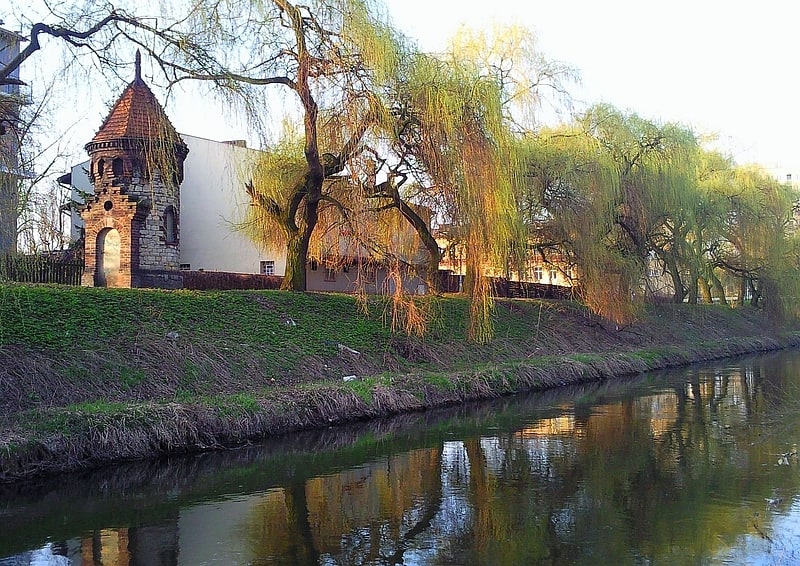
Sielecki Park - a historic city park in Sosnowiec; Second in terms of the year of its establishment, fourth in terms of size among city parks and also the largest of the historic parks; Constituting a complex together with Sielecki Castle; Divided into two parts: New Sielecki Park and Old Sielecki Park, which respectively occupy an area: the new part - 9.84 ha, the old part - 10.4 ha, and the border is the Black Przemsza River flowing through the middle of the park.
Muzeum Geologiczne WNoZ
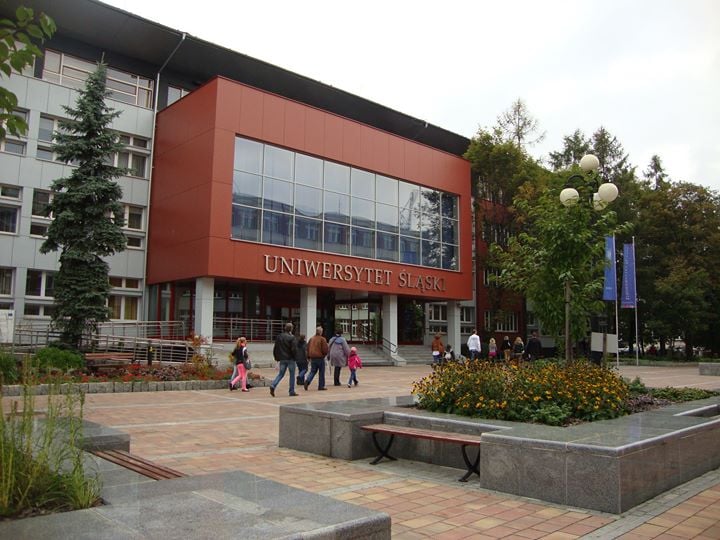
Museum
Address: 60 Będzińska, Sosnowiec